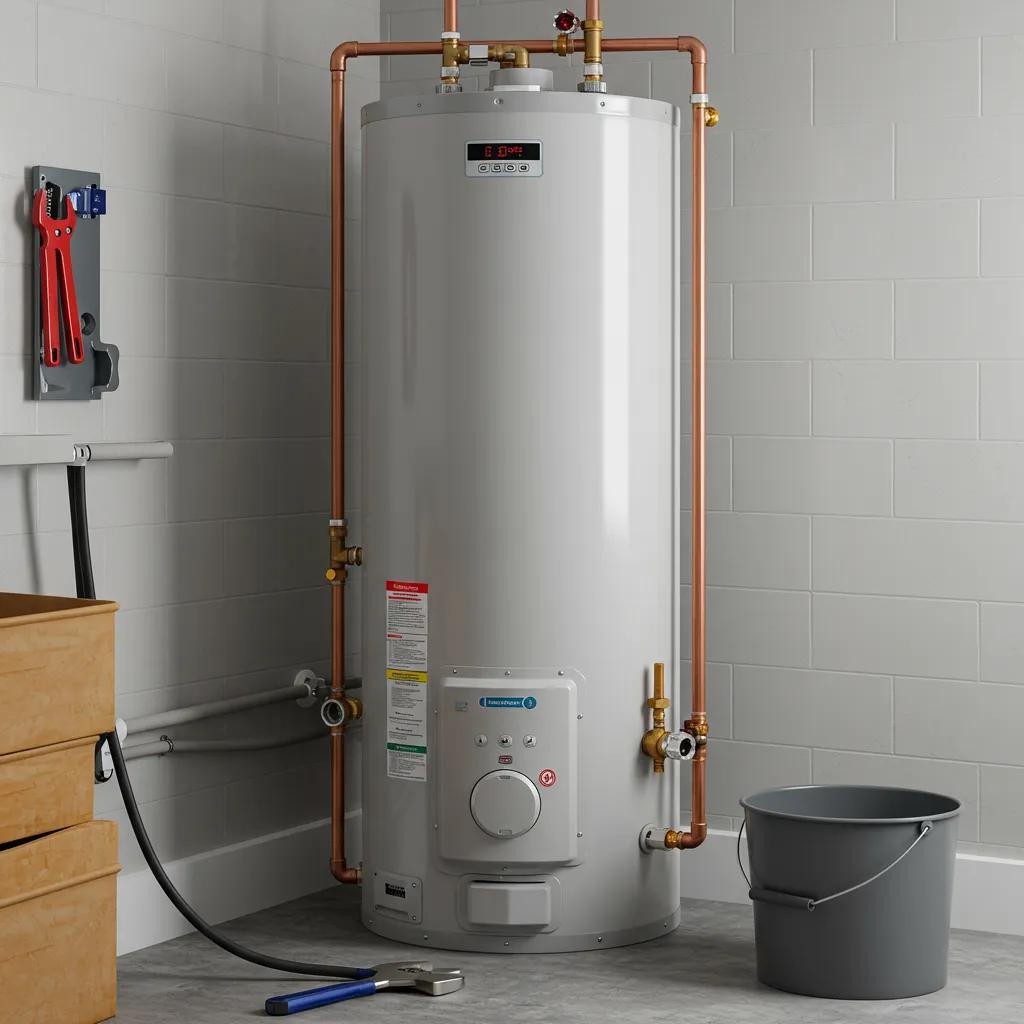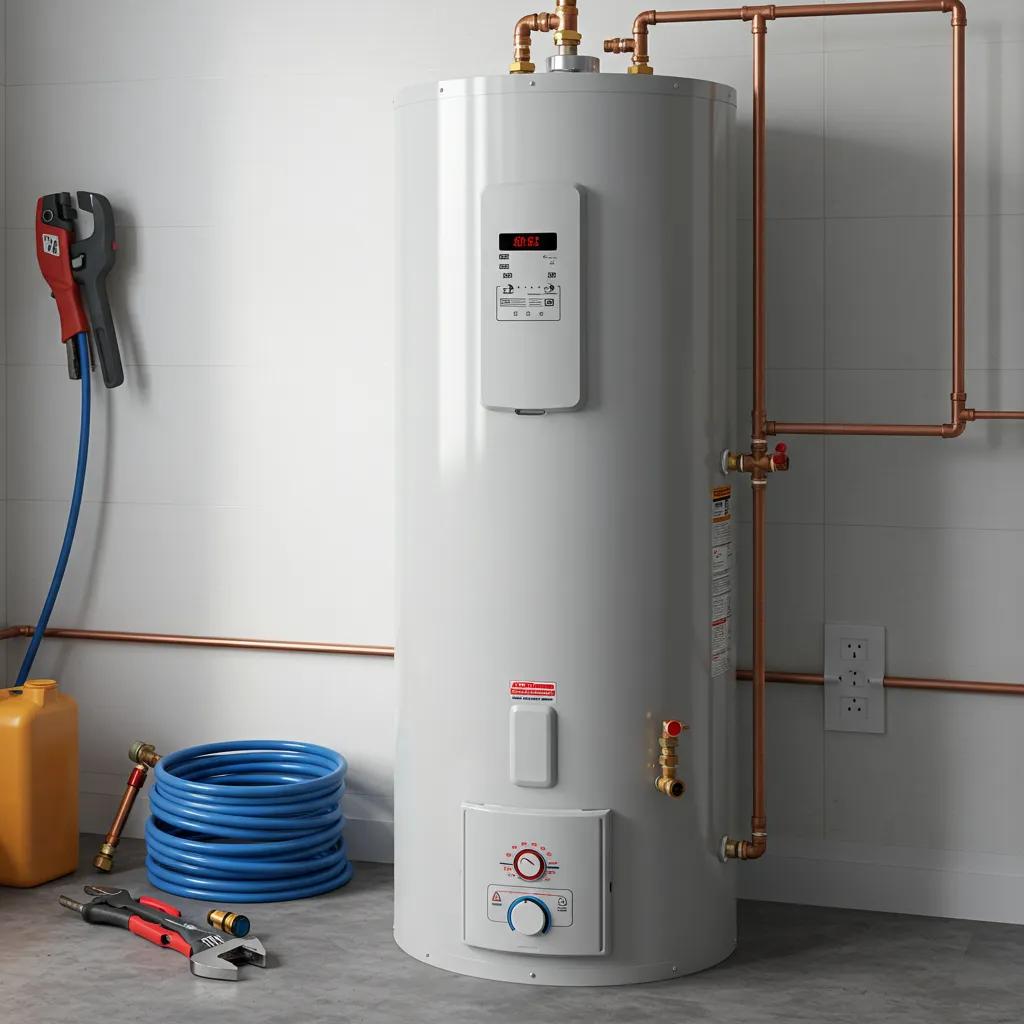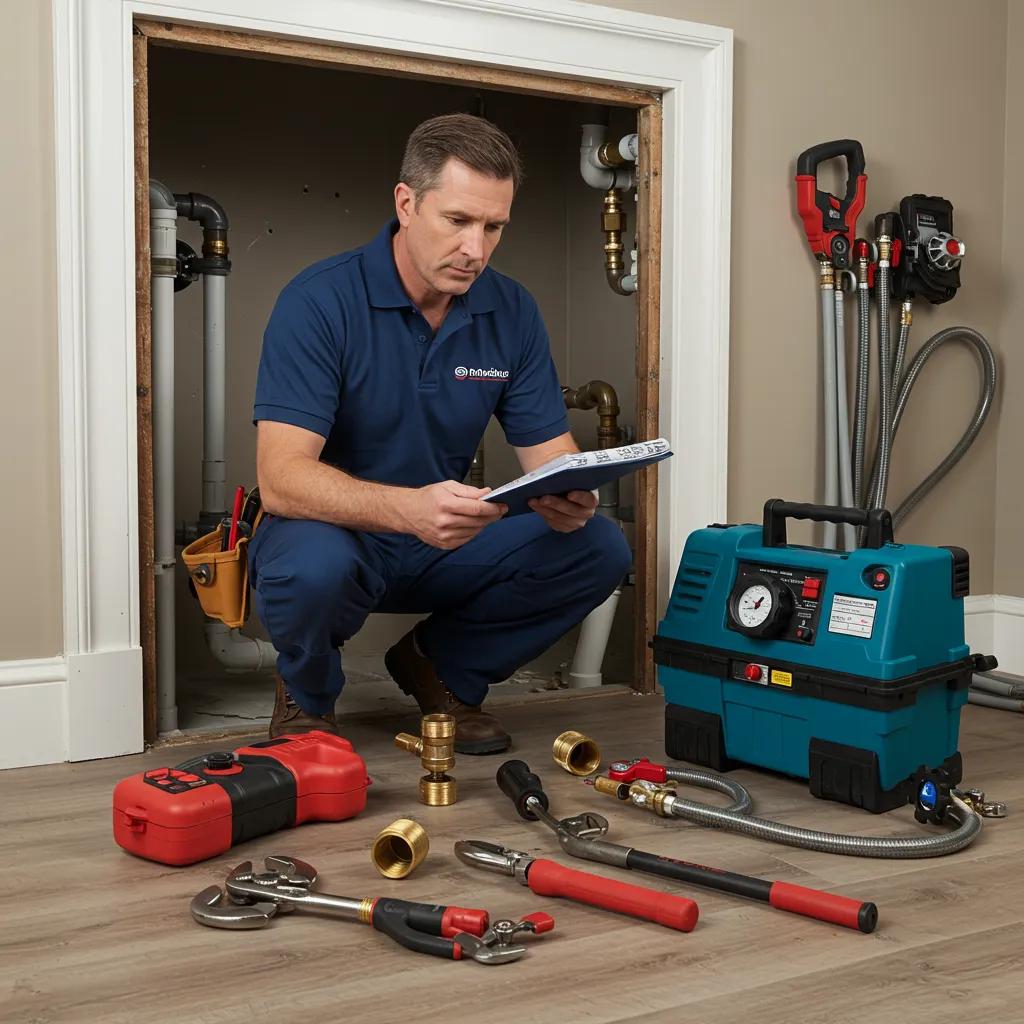Water Heater Maintenance Tips for Optimal Performance and Longevity in Erie, PA
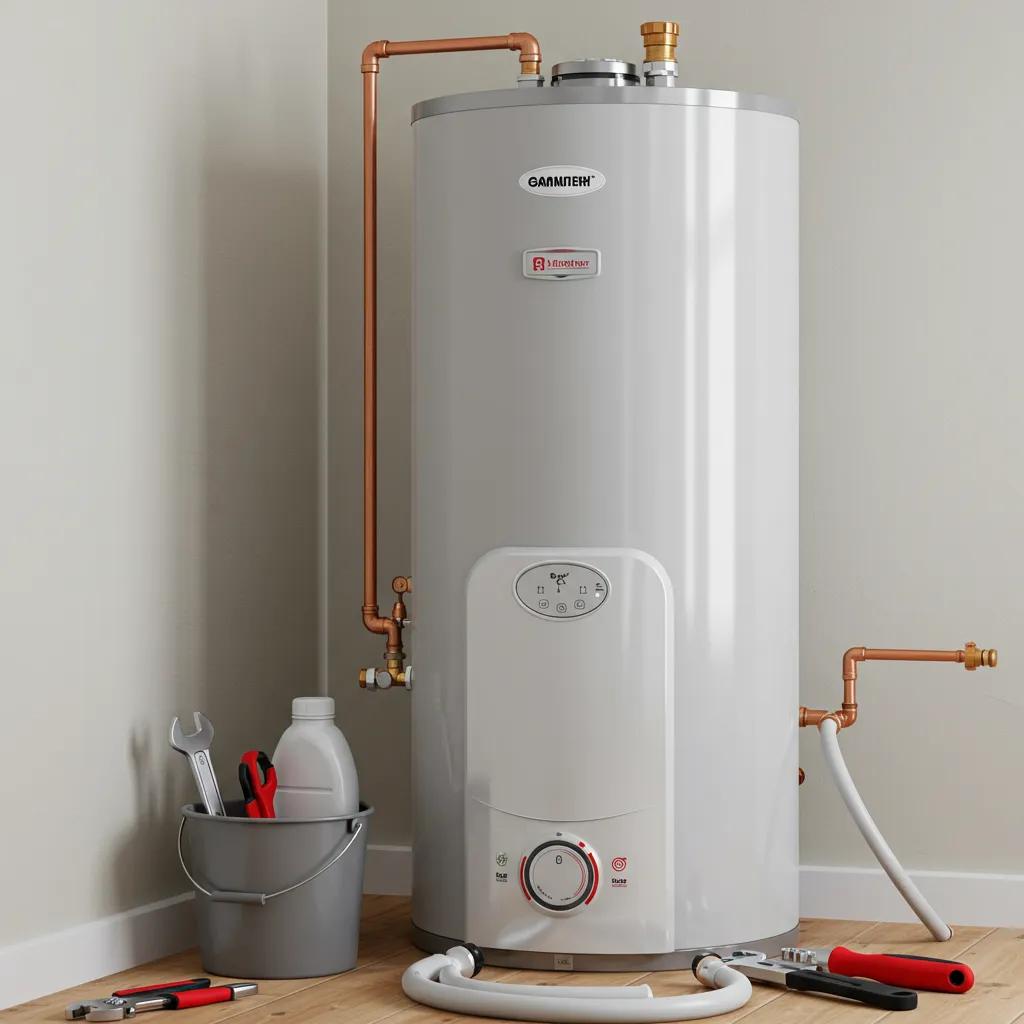
Annual water heater maintenance can recover up to 15 percent of lost heating efficiency and extend appliance life by several years. Homeowners facing rising energy bills or noisy tanks often overlook sediment buildup, corrosion risks, and thermostat drift that erode performance over time. This guide delivers practical water heater maintenance tips—covering flushing procedures, anode rod care, energy-saving adjustments, troubleshooting common problems, tankless unit descaling, and professional support options from a trusted local expert. You will learn how routine servicing prevents leaks and inefficiency, the step-by-step sediment-removal process, anode rod inspection criteria, best temperature settings, insulation strategies, symptom recognition for repairs, and when to call on C. Carlin Plumbing’s 150 years of combined experience for comprehensive water heater installation, repair, and emergency response in Erie County.
Throughout this article, you’ll discover:
- Why scheduled maintenance matters and which issues it averts
- How to flush sediment and maintain tank integrity
- When and how to inspect or replace the anode rod
- Efficiency optimization through temperature and insulation
- Key warning signs of failure or wear
- Specific care for tankless systems
- C. Carlin Plumbing’s professional maintenance and repair services
Implement these expert-backed water heater maintenance tips to reduce operating costs, secure reliable hot water, and ensure peak performance in Erie, PA.
Why Is Regular Water Heater Maintenance Essential?
Regular water heater maintenance prevents sediment buildup, corrosion, and inefficiencies that shorten appliance lifespan and drive up fuel or electricity costs. By scheduling an annual inspection, homeowners protect against hidden damage in components like the dip tube, heating element, and temperature and pressure relief (TPR) valve. Routine servicing also ensures that safety features function correctly and that scaling does not impair water flow or temperature consistency. These preventative measures support reliable hot water delivery and promote energy savings, aligning with local best practices in Erie County.
Effective maintenance tasks form the foundation for each subsequent procedure, guiding homeowners through flushing tactics, anode rod care, and efficiency enhancements. Understanding basic maintenance responsibilities creates a roadmap for deeper technical steps, ensuring every aspect of your water heater remains in optimal condition. Recognizing these benefits leads us to examine specific problems that maintenance can prevent.
What Problems Does Maintenance Prevent?
Sediment accumulation, corrosion, and valve failures rank among the most common water heater problems in Erie’s varied water conditions. Annual flushing removes grit that abrades the tank interior and heating elements, while anode rod inspections curb rust formation on steel surfaces. Testing the TPR valve prevents dangerous overpressure scenarios, and thermostat calibration avoids scalding or underheating. These core tasks thwart issues such as reduced capacity, noisy operation, pinhole leaks, and potential tank ruptures, delivering both safety and performance improvements.
By addressing these vulnerabilities before they escalate, you avoid costly repairs or early replacement. Consistent attention to basic maintenance transforms a vulnerable appliance into a dependable home fixture, setting the stage for energy-efficiency gains explored in the next section.
How Does Maintenance Improve Energy Efficiency and Lifespan?
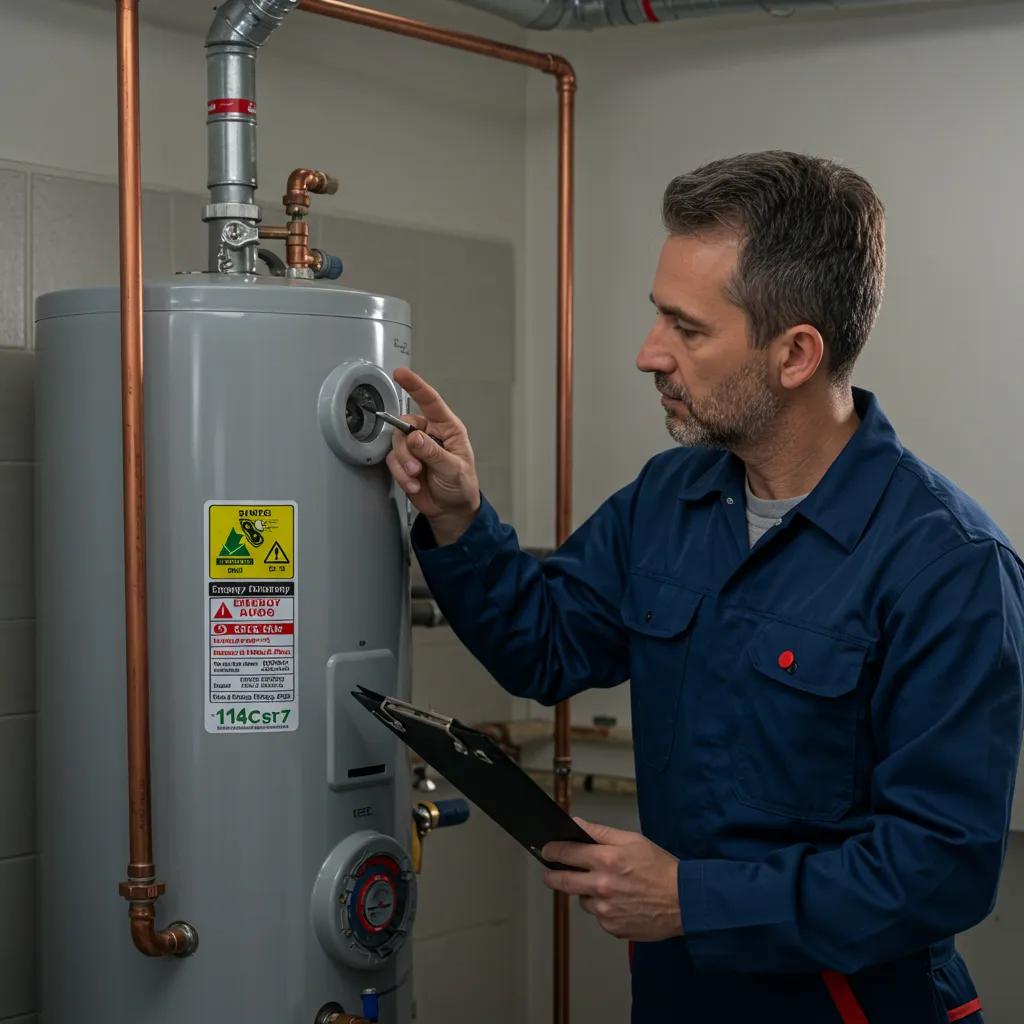
Proper water heater maintenance enhances fuel or electrical efficiency by up to 18 percent and can extend tank model lifespan from 10 to 20 years. Flushing away mineral deposits restores full heating element contact, reducing recovery time and lowering energy consumption. Inspecting and replacing sacrificial anode rods prevents corrosion that diminishes insulation integrity, while TPR valve checks safeguard against uncontrolled heat buildup. Together, these procedures optimize thermal transfer and preserve component health, yielding smoother performance and fewer unexpected breakdowns.
Regularly tuned systems require less energy to maintain desired temperatures, translating directly into reduced utility bills. These efficiency benefits underpin long-term savings and ensure that your water heater continues delivering consistent hot water when you need it.
How Often Should You Service Your Water Heater in Erie, PA?
For most tank water heaters in Erie County, a professional service once a year is recommended, with biannual inspections in areas with exceptionally hard water. Gas units may benefit from semi-annual checkups to verify burner efficiency and ventilation, whereas electric models typically require annual attention to elements and wiring. Tankless systems often need descaling every six to twelve months, depending on mineral content and usage patterns.
Scheduling regular appointments with a licensed team ensures each maintenance task—flushing, anode rod evaluation, valve testing, and electrical or gas component assessment—is completed correctly. Timely service intervals maximize safety, maintain warranties, and uphold peak performance across every water heater type.
How Do You Properly Flush Your Water Heater to Remove Sediment?
Flushing a water heater involves draining accumulated sediment from the tank to restore full heating capacity and prevent corrosion. This routine process is vital for reducing noise, improving recovery time, and extending the appliance’s operational life. The following steps outline a safe, effective flush procedure for tank-style water heaters.
What Are the Step-by-Step Instructions for Flushing a Water Heater?
Begin by turning off power or gas supply, then connect a garden hose to the drain valve at the tank’s base. Open a hot water faucet inside your home to relieve pressure, then open the drain valve and let water—and sediment—flow until it runs clear. Close the valve, remove the hose, refill the tank, and restore power or gas to resume normal operation.
- Power Down – Switch off breaker or gas control.
- Pressure Relief – Open a hot water tap.
- Drain – Attach hose and open valve.
- Flush – Let sediment-laden water clear.
- Refill – Close valve and allow tank to refill.
- Restart – Restore power or gas and verify function.
Completing these steps annually in Erie’s mineral-rich water environment maintains full tank capacity and reduces scale-driven heat loss.
How Does Flushing Prevent Sediment Buildup and Improve Efficiency?
Sediment removed during flushing acts as an insulator on heating elements, forcing systems to run longer and consume more energy. By clearing this layer, heat transfer efficiency returns to optimal levels, cutting recovery times and reducing operational strain. Clean tanks also discourage bacterial growth and mitigate unpleasant odors, supporting both safety and performance.
Improved thermal efficiency from periodic flushing shifts energy usage downward, aligning your household’s hot water needs with lower utility costs. These gains dovetail with anode rod care to sustain long-term efficiency and equipment integrity.
When Should You Call a Professional for Flushing Services?
While homeowners can perform basic flushing, professional technicians from C. Carlin Plumbing ensure a complete service—verifying drain valve integrity, inspecting supply lines, and testing safety valves. Calling a licensed team is recommended when sediment is hardened, when valves leak, or if you encounter unusual noises during draining. Expert intervention prevents mishaps, secures warranties, and addresses any underlying issues revealed during the flush process.
Professional flushing visits also include corrosion inspections, component lubrication, and performance checks, delivering peace of mind and peak reliability for your water heater.
When and How Should You Inspect and Replace the Anode Rod?
Inspecting and replacing the anode rod prevents internal tank corrosion by offering a sacrificial metal that oxidizes before tank walls. Sacrificial anode rods are typically made of magnesium or aluminum and attract corrosive particles in water, protecting the steel interior. Regular inspection identifies depletion levels and signals when replacement is due to avert leaks and structural failure.
What Is the Role of the Anode Rod in Corrosion Prevention?
An anode rod sacrifices itself by corroding in place of the steel tank, drawing away ions that would otherwise attack inner surfaces. This corrosion-prevention mechanism preserves tank integrity, prolongs lifespan, and prevents rust-colored water that signals metal degradation. Without a functioning anode rod, tanks deteriorate rapidly, leading to leaks and complete system replacement.
Anode Rodding Standards for Optimal Performance
To achieve these requirements, the basic production steps in anode rodding must be done to an acceptable standard, all of the time. Not meeting these standards has a detrimental impact on smelter performance and costs.
2. This paper first outlines acceptable standards for the basic steps of rodding anodes, and then reviews the state of the art, challenges, opportunities and future directions for the rod-anode connection.
Anode rodding basics, D Molenaar, 2014
How Do You Check the Condition of the Anode Rod?
Inspecting an anode rod involves shutting off power or gas, releasing tank pressure, and loosening the hex-head rod at the top. Carefully extract the rod and examine its diameter and surface. A rod reduced by more than half of its original thickness or coated in calcium scale should be replaced immediately.

An anode rod inspection draws a clear path to subsequent replacement procedures and efficiency outcomes.
What Are the Signs You Need Anode Rod Replacement?
Rust-colored water is the most visible indicator that the anode rod has fully corroded and no longer protects the tank interior. Other signs include metallic tastes, sediment-heavy drains, or unusual discoloration in water output. If your inspection reveals severe abrasion, pitting, or a coating of mineral deposits, rod replacement should be scheduled without delay.
How Can Professional Replacement Extend Your Water Heater’s Life?
C. Carlin Plumbing’s licensed technicians use high-grade anode rods matched to your water chemistry—whether magnesium for better corrosion control or zinc-alloy rods for sulfur odor reduction. Professional replacement includes tank interior checks, scale removal, and full system testing, ensuring the new rod performs optimally and extends the tank’s usable life by several years.
How Can You Optimize Your Water Heater’s Efficiency?
Optimizing water heater efficiency combines proper temperature settings, insulation, and usage habits to reduce energy consumption and lower utility bills. Adjusting your thermostat, insulating the tank and pipes, and scheduling routine maintenance collectively enhance performance and prevent heat loss in Erie’s seasonal temperature swings.
What Is the Best Temperature Setting for Your Water Heater?
Setting your water heater to 120 °F balances energy savings with safe, comfortable hot water delivery. At this temperature, households can save 3–5 percent on annual energy costs while limiting mineral precipitation and reducing scald risk. Lower temperatures also slow corrosion and extend component lifespan.
How Does Insulating Your Water Heater and Pipes Save Energy?
Insulating tanks with a quality blanket and wrapping hot water pipes in foam reduces standby heat loss by up to 16 percent. Proper insulation maintains water temperature longer, decreasing recovery cycles and cutting fuel or electricity usage. Effective insulation measures deliver quieter operation and a steadier hot water supply.

Integrating these efficiency measures builds on routine maintenance steps like flushing and anode rod replacement, ensuring comprehensive system optimization.
What Are Additional Tips to Reduce Water Heating Costs?
- Install Low-Flow Fixtures – Lower fixture output preserves hot water volume.
- Use Demand-Controlled Recirculation – Reduces standby heat loss by circulating only when needed.
- Schedule Off-Peak Heating – Program timers to heat water during lower energy-rate periods.
Implementing these strategies together with routine maintenance elevates overall system efficiency, drives energy bill reductions, and sustains reliable hot water service.
What Are the Common Signs Your Water Heater Needs Maintenance or Repair?
Early recognition of warning signs prevents full breakdowns and costly emergency replacements. Symptoms such as inconsistent hot water, leaking, rumbling noises, or discolored output indicate that maintenance or repair is required. Prompt attention mitigates risks, protects warranties, and preserves system performance.
How to Identify No Hot Water, Leaks, and Strange Noises?
No hot water, dripping at connections, or loud rumbling during heating cycles often point to combustion issues, failed heating elements, or heavy sediment layers. A hissing sound can signal faulty TPR valves releasing excess pressure. Inspect visible plumbing joints for moisture and listen for abnormal sounds during operation.
What Does Rust-Colored or Discolored Water Indicate?
Rust-colored water reveals internal corrosion, often due to a depleted anode rod or corroded tank linings. Brown or muddy water may also result from scale detachment during flushing. Discolored output reduces confidence in water quality and signals urgent rod replacement or tank evaluation by a professional.
When Should You Contact a Professional for Water Heater Repair in Erie, PA?
Contact licensed technicians when you notice persistent leaks, pressure-valve discharge, electrical faults, or combustion irregularities. C. Carlin Plumbing’s fast local response ensures thorough diagnostics, honest upfront pricing, and solid workmanship warranties. Professional intervention resolves complex issues safely and extends your system’s reliable lifespan.
How Do You Maintain Tankless Water Heaters for Optimal Performance?
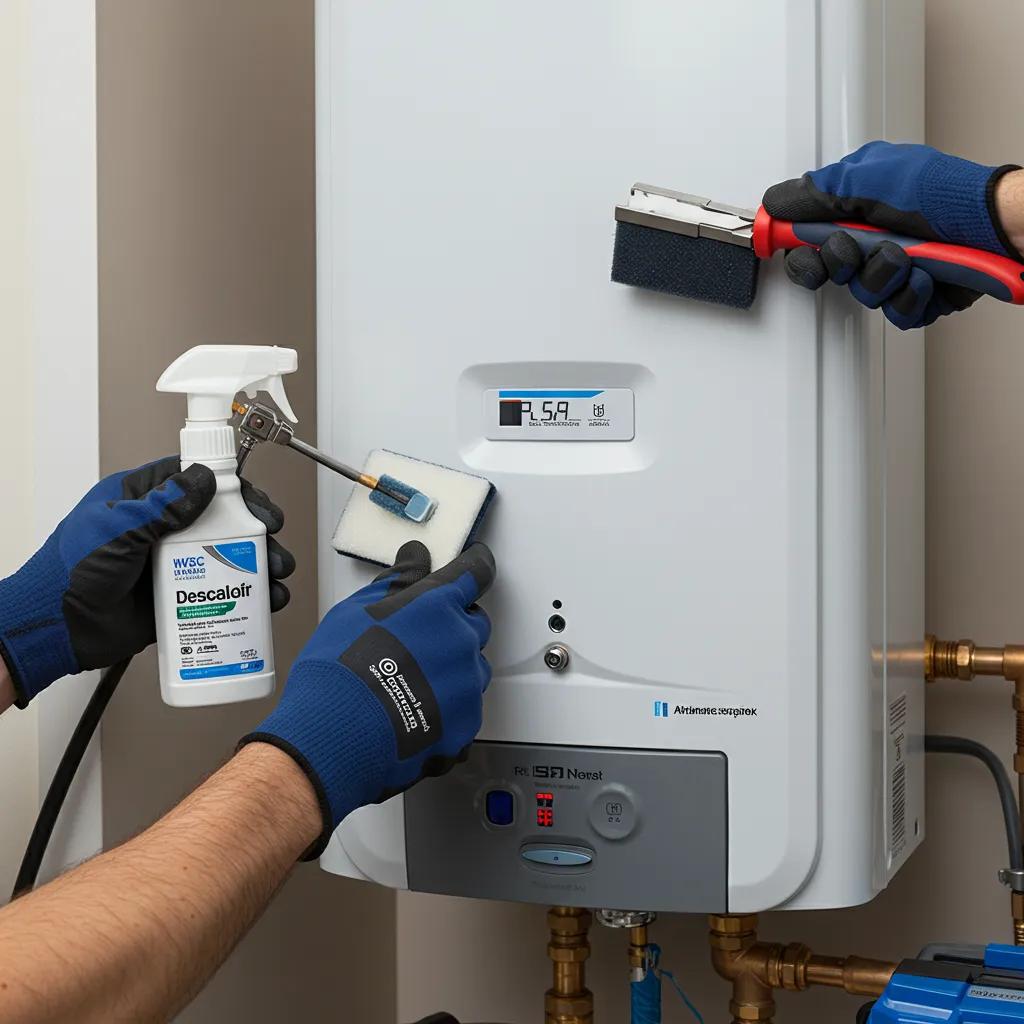
Tankless water heaters require descaling and filter maintenance to prevent mineral buildup on heat exchangers, which impairs flow rates and heating efficiency. These on-demand systems benefit from annual descaling in hard-water regions, ensuring uninterrupted hot water delivery and manufacturer warranty compliance.
What Are the Unique Maintenance Needs of Tankless Water Heaters?
Tankless units feature compact heat exchangers with narrow passages susceptible to scale. Regular cleaning of inlet filters, flushing with a vinegar solution, and inspecting gas or electrical connections preserve performance. Unlike tank systems, tankless devices rely on precise flow sensors and electronic controls that must remain clean and functional.
How Do You Flush and Descale a Tankless Water Heater?
- Power Off and Isolate – Turn off unit and close inlet/outlet valves.
- Connect Pump and Solution – Attach a circulation pump with a descaling solution reservoir.
- Circulate Cleaning Agent – Run solution for 45 minutes through the heat exchanger.
- Rinse – Flush with clean water until all residue clears.
- Restore and Test – Reopen valves, power on, and verify flame or heating response.
Descaling at recommended intervals prevents burner or element strain, maintains flow rates, and upholds energy-efficiency ratings.
When Is Professional Tankless Water Heater Service Recommended?
Professional service is advised if you experience cold spots, error codes, or reduced flow despite DIY flushing. C. Carlin Plumbing’s licensed technicians perform comprehensive system diagnostics, safe chemical descaling, filter replacement, and software calibration—ensuring reliable, on-demand hot water for years to come.
What Professional Water Heater Maintenance Services Does C. Carlin Plumbing Offer in Erie, PA?
C. Carlin Plumbing provides full water heater installation, repair, and emergency maintenance services backed by over 30 years of local experience and a licensed team with 150 years of combined expertise. As a trusted local plumbing and HVAC contractor since 1994, the company delivers honest upfront pricing, quality workmanship with solid warranties, and a fast response for Erie and surrounding townships.
How Does C. Carlin Plumbing Ensure Quality and Reliable Maintenance?
Technicians follow manufacturer guidelines, perform detailed inspections of anode rods, TPR valves, heating elements, and controls, and document each step to maintain transparency. High-grade replacement parts, corrosion-resistant materials, and calibrated instrumentation guarantee system safety and peak performance over time.
What Emergency Water Heater Repair Services Are Available?
In urgent scenarios—such as sudden leaks, loss of hot water, or pressure-valve failures—C. Carlin Plumbing offers rapid emergency dispatch. Licensed professionals diagnose critical faults, secure affected areas, and implement temporary or permanent repairs to restore functionality without delay.
How Can You Schedule a Water Heater Maintenance or Repair Appointment?
To arrange professional servicing or an emergency repair, contact C. Carlin Plumbing’s office by phone or inquire via their website. A local representative will confirm appointment availability, outline required services, and provide an honest, upfront estimate—ensuring no surprises and reliable results for all water heater maintenance and repair needs.

